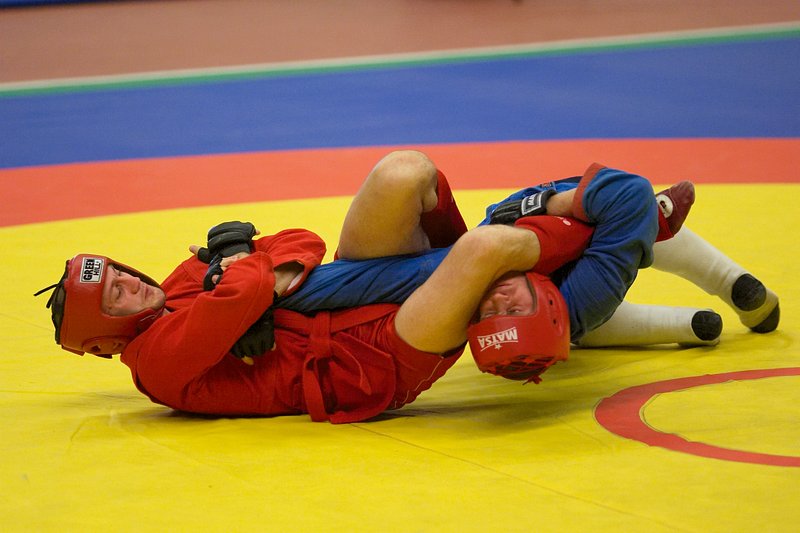Sambo is a martial art, originally developed in the Soviet Union at the beginning of the 20th century. Recognized as a sport by the USSR since 1938.
SAMBO, in Russian: Cамбо, means “self-defense without weapons”.
Popularly known for characters in games Street Fighter, Zangief, Abel, Tekken Sergei Dragunov.
It is a combination of self-defense techniques created by Vasili Oshchepkov (1892-1937) and Viktor Spiridonov (1881-1943), but each technique has a different style.
Spiridonov's technique (a notorious fight researcher) had roots in boxing, savate, Olympic wrestling (Greco-Roman wrestling and free wrestling), Slavic wrestling, Japanese aikijujutsu and mainly Shuai Jiao.
Oshchepkov's technique had influences from tenjin shin'yō-ryū and kitō-ryū (schools of aikijujutsu), in addition to judo. Oshchepkov's style is most similar to current sambo.
In 1937, Oshchepkov was executed during the system of political purges promoted by the Stalin regime.
A student of Oshchepkov, called Anatoly Kharlampiev (1906-1979), was responsible for improving the style, introducing Spiridinov's techniques and for recognizing the martial art by the USSR sports committee. He is recognized as the creator of contemporary Sambo, however, there is no single consensus on the existence of a creator of Sambo.
-
The International Federation of Associated Wrestling (FILA), in 1968, recognized Sambo as an international style of fighting, alongside Greco-Roman Wrestling and Luta Livre, modalities currently recognized as Olympic.
In 1985, the International Amateur Sambo Federation (FIAS) was created and, in 1993, it was divided into the eastern FIAS (under Russian control) and the western FIAS (under North American control), both using the same name and logo. .
In 2005, through an agreement with FIAS, FILA resumed jurisdiction over sambo.
The FIAS currently has the power of jurisdiction over international sports and combat sambo competitions. Competition results can be found on the competition website.
There are four versions of sambo, although supported by a single system, they are:
-
Sports sambo: a combination of wrestling and judo. The competition is similar to Japanese wrestling, with some differences in rules, protocol and uniform. Example: Allows all leg locks.
-
Self-defensive sambo: similar to jiu-jitsu and aikido, used to defend against armed or unarmed aggression.
-
Combat sambo: used and developed by the military. Includes complete combat forms including kicks and punches. There are competitions, even though they are more aggressive and prone to injuries.
-
Special Sambo: developed for Army Special Forces and Quick Reaction Forces. The style differs according to the tasks and objectives. It is a kind of complement to combat sambo.
The ASA (American Sambo Association) aims to introduce freestyle sambo, the sport sambo with more immobilization moves, where punches are not allowed.
The original sambo does not have graduations or rankings, however the FIAS proposes a ranking system (belts), being: Novichok (black); Yunosheskiy razryad (gray),Vzrosliy razryad (brown); Kandidat of Master Sambo (green); Master Sambo (blue); Master Sambo of International Class (red); Grand Master (gold) and Uchitel (white).
The belt passing exam is recommended by the aforementioned entity and is related to victories in combat with athletes of the same ranking or higher.
Some of the main sambocas:
Fiódor Emelianenko – four times world sambo champion. Considered the best heavyweight MMA fighter.
Vladimir Putin – Master Sambo (blue belt) and black belt (white and red – sixth dan) in judo. Honorary president of FIAS.
Blagoi Ivanov – 2008 world sambo champion (won the 2008 sambo world championship)
Vladimir Kozlov – professional wrestler for the WWE company, mastering the art of sambo, as well as judo, karate and taekwondo.

